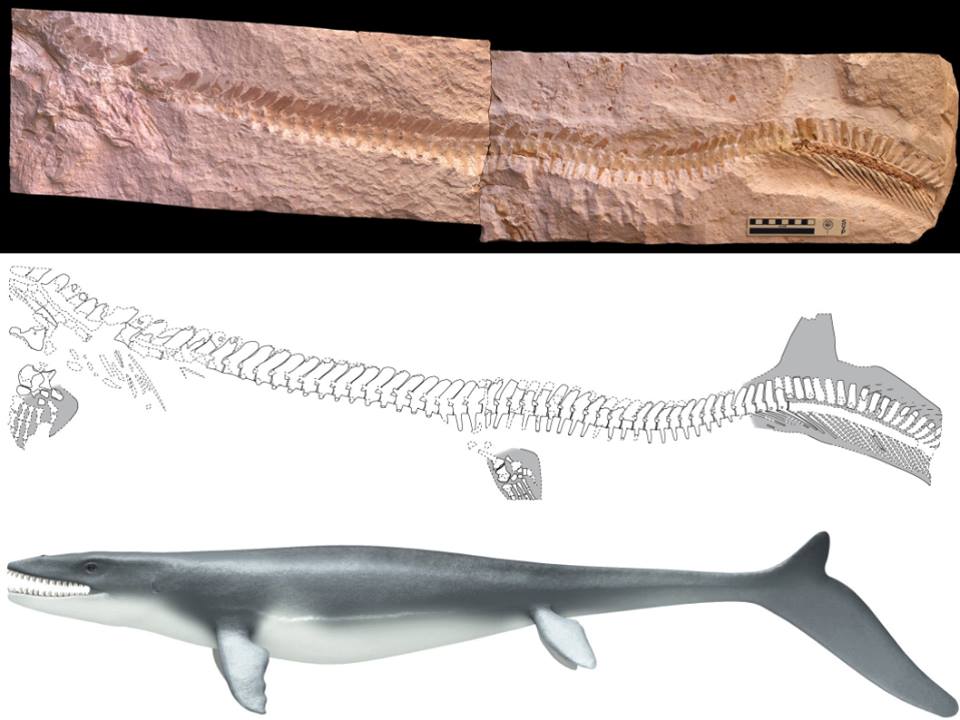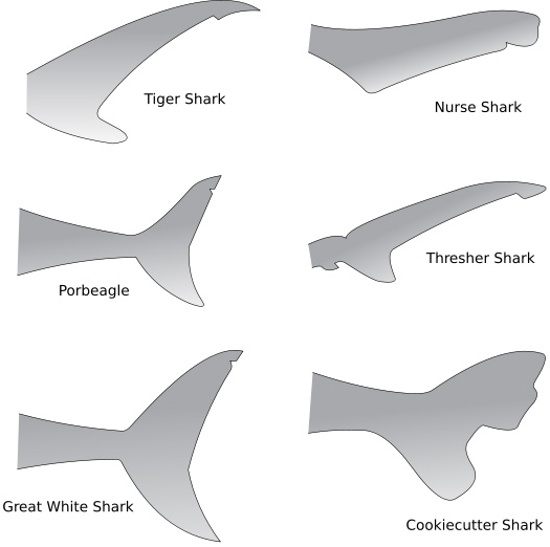As I explained over the weekend, during an interview on “Monster X Radio” with former MonsterQuest guest star and cryptozoologist Scott Mardis, I have my own, common sense theory as to why Mosasaurs’ tails were the shape they were. We know now that at least some mosasaur species had shark-like caudal fins at the ends of their tail. This was a practical adaptation to a marine environment, and allowed them to move through the water more like fast-moving makos than lumbering alligators. What is unique about the structure of a mosasaur caudal fins is that, unlike the sharks they resembled, their fin lobes were inverted: the lower lobe was significantly longer than the upper.

As an IGFA all-tackle world record holder and a Master Angler thrice over, I’ve had my fair share of saltwater experience and have fished for sharks many times (catch and release, of course). I’ve seen how big sharks move and have studied their physiology in detail. I’ve even touched them boatside. A shark’s tail typically has lobes that are either the same length or the upper lobe is longer – in some species, (e.g. tiger and blue sharks) significantly, and in the case of the thresher shark, extraordinarily so. The reason for this is based on the shark’s hunting patterns and methods. When it comes to locomotion, their pectoral fins can easily adjust angle of ascent or descent, but a caudal fin with an elongated upper lobe allows the predator to apply additional pressure when diving – hence it can descend more easily into the depths while pursuing prey than it can ascend toward the surface. (Note: those with similar size tail lobes can ascend as well as they can descend. Great whites, for example, have fin lobes of approximately the same size. This is because they often hunt prey at the surface, hiding below and then rushing up to attack).

Mosasaurs had (or is it “have”?) the opposite of this. Their lower tail lobes were far longer than the upper. The question is why? Was there some evolutionary advantage to this hypocercal design?
The answer is eminently simple and has to do with the marine reptiles’ respiration. Mosasaurs were air breathers, and as such, needed to surface – probably blowing like a whale, especially the larger specimens. Having an elongated lower lobe on their caudal fins would allow them to power themselves higher in the water column more easily than they could descend, a practical necessity when pursuing prey into the abyss and then feeling the need to surface for much-needed oxygen.
An examination of the elongated lower lobes on caudal fins of large, deep-diving Ichthyosaurs such as Shonisaurus and Shastasaurus shows similar morphological adaptations. (Shonisaurus) This type of convergent evolution in deep-diving marine reptiles supports this theory.
And that, dear readers, is why evolution gave these mighty marine monitors the tail shape it did. Mosasaurs could accelerate rapidly and turn on a dime, but more importantly, when they needed to get to the surface for air and their oxygen levels were low, it took much less energy to get there.
Max Hawthorne, author
www.kronosrising.com



